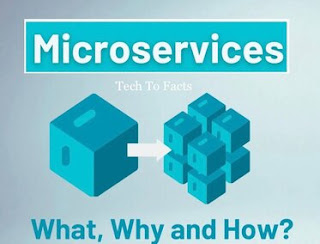Microservices is a pattern for developing software applications as suites of small services, each running in its process and communicating with lightweight mechanisms, often an HTTP resource API. These services are built around business capabilities and are independently deployable by fully automated deployment machinery. There's much more to microservices than this, but it's a good start to understand the motivation behind building your system like this.
What Are Microservices?
Microservices are a software development method in which applications are composed of small, independent services that communicate with each other over HTTP. This allows teams to build, deploy and scale each service independently to support the needs of the business.
Monolithic applications are single-component programs that are often composed of multiple layers, components, and libraries. These applications can be challenging to maintain because they tend to grow out-of-date over time as new technologies emerge. Microservices allow you to break down your monolithic application into smaller pieces that can be updated more easily.
Container options
There are several container options for you to choose from.
Docker: This is the most popular and widely used container platform, with companies like Amazon Web Services and Microsoft Azure using Docker as a base for their solutions. It has a large community of developers who contribute to the open-source project and offer support on forums. However, you must use another service provider if you want cloud-based management software or a registry (a database where containers are stored).
JFrog: This enterprise solution integrates well with Docker and other tools that your team may already use or plan to use in the future. It also offers cloud services through its website, so there’s no need for an additional provider outside of your deployment environment. A downside is that this is one more tool to manage alongside all others required by microservice development teams (such as CI/CD tools).
Continuous integration and continuous delivery (CI/CD)
One of the main benefits of microservices is that it allows you to develop and deploy individual components separately. This makes it easier to continuously integrate and deliver new features and roll out bug fixes. However, these processes still need some manual work.
A Continuous Integration (CI) process helps developers automate the build process, allowing them to quickly identify any issues with their code in a continuous flow from source control to production deployment.
Continuous Delivery (CD) takes this one step further by automating testing and deployment so that new features can be rolled out automatically on an ongoing basis.
A CI/CD process can help your team deliver new features faster, but it’s essential to keep in mind that this is a process that you need to improve continually. As your application grows and becomes more complex, you’ll want to ensure that your automation tools are flexible enough to accommodate changing requirements.
What other Reads?
Releasing services into production
For your microservices architecture to be successful, you must release each service into production. This is where the rubber meets the road, and you can start taking advantage of all your hard work by using your microservices to build new features and solve problems.
Before releasing a new version of an existing service, it's crucial to test it thoroughly by running integration tests in an environment that mirrors what will eventually run in production.
Once you've done all this preliminary testing and feel confident enough about any changes made since the last deployment, you can go ahead with pushing out the updated codebase into staging or pre-production environments first—but again, remember not just running unit tests here but also performing smoke testing on several services individually before letting them access shared resources like storage or databases together (this might include running integration tests against these linked resources if needed).
Conclusion
Microservices are software development approaches that encourage you to break up large applications into more minor, modular services. The idea is that each service can be developed, tested, and deployed independently of other services. This approach has many benefits for both developers and end users alike.
However, you need to be careful when using microservices because they can also create a lot of overhead. You must ensure that your team is well-equipped to handle the challenges that come with this approach so that it doesn’t slow down your development process or cause more problems than it solves.



